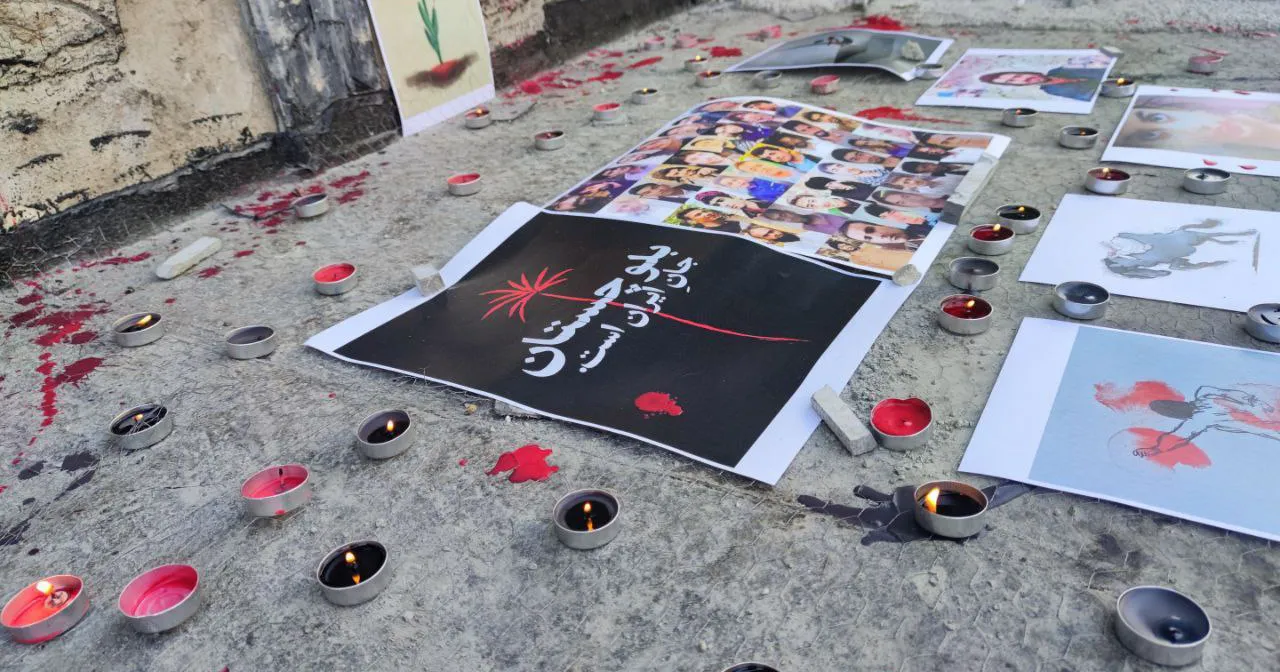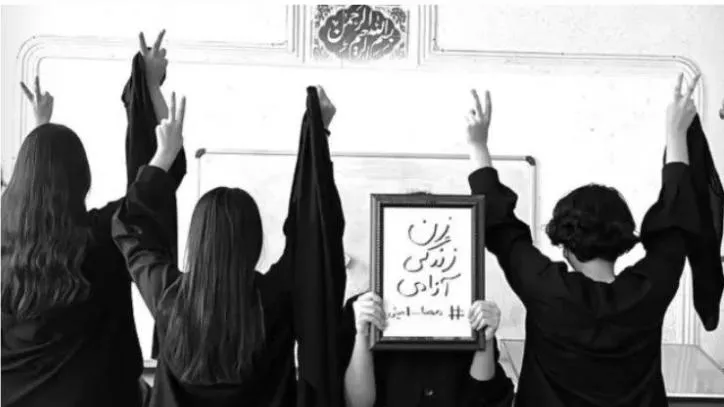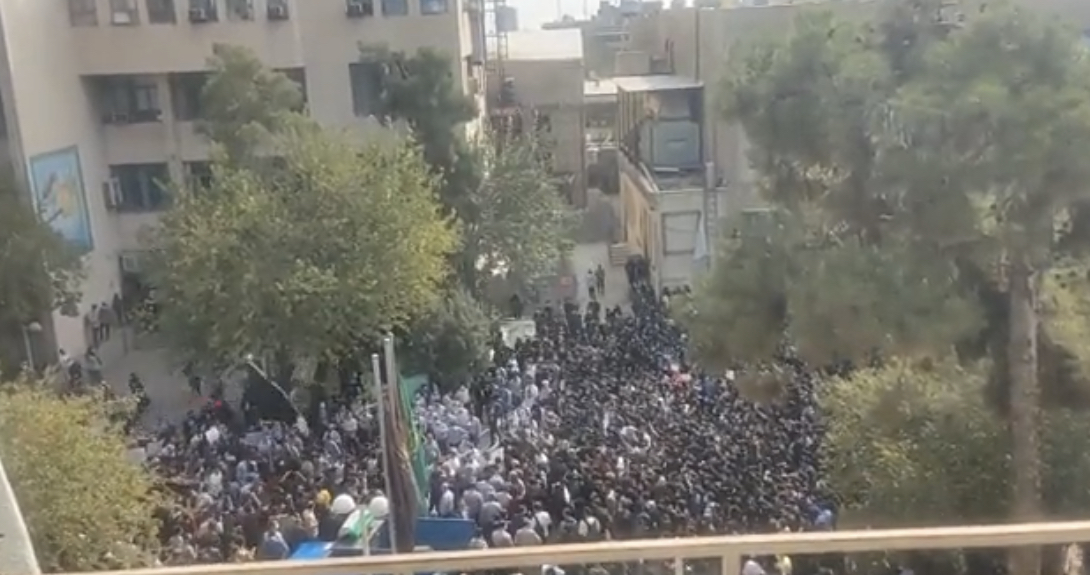
Rise in Price of Dollar and People’s Empty Tables
The editorial of Etemad sheds light on the dependence of Iran’s economy on the US dollar.
Despite repeated warnings against reliance on the US on dollar, it as if some people intentionally want to create this situation of dependency while some are against it. Experts see this as nothing but a fallacy. From people’s clothing to their cellphones, everything is tied to the price of the dollar.
The rise in the price of the dollar will impact the prices of all goods and services resulting in continuous fluctuations in Iranian markets. A look at the CRB Index – which ranges from energy to agriculture – shows constant fluctuations in the market.
When 45 million tomans of liquidity per second is added to the Iranian economy and with economic growth almost zero in the past decade, it will result in high inflation which will end in the devaluation of the national currency against the dollar.
Today, inflation is annually 43 percent in Iran, while it is 8 percent in the United States. Under these circumstances, economic actors know that the Iranian national currency can lose up to 35 percent of its value in a year, even though the government controls all imports and exports.
The reason for the drop in the value of the Iranian national currency must be seen in the context of Iran’s economy. The dollar is closely tied to the lives of the Iranian people, but it is the task of the government and the Central Bank of Iran to maintain the value of the national currency.
To see if the Iranian national currency will further lose its value or not, one must consider the following questions: first, will liquidity keep rising? Second, will Iran’s economic growth be under 3 percent? And third, will inflation remain the same?
Answering these questions will create new circumstances in the Iranian economy and will open new paths for Iran.
Any Nuclear Agreement Will Be Under New Conditions
The editorial of Arman Melli explains why the current nuclear deal (JCPOA) cannot be restored as it is, as conditions have changed both on the global scene and in Iran.
Any agreement or political understanding has its own particular conditions and implications. Conditions have changed compared to last year, when Iran had an opportunity with US President Joe Biden taking office, but did not take advantage of it.
Now, after the war in Ukraine, there have been changes in the global order and the West’s view of Iran has changed with it. Additionally, there are unprecedented protests in Iran – which are quite different from the previous ones. So, Western countries might not be interested in reviving the nuclear deal as before.
Accordingly, there will be no nuclear deal unless there are changes in conditions and the Americans step back from their own stance. The nuclear deal is no longer on the agenda of the Americans and Europeans.
Western countries now have an opportunity to exert more pressure on Iran, and if the nuclear deal is going to be restored, it will be under new conditions.
Furthermore, it must be considered that the issue of the nuclear deal is different from the deal signed in 2015 (JCPOA). The West is after a political and diplomatic deal with Iran, just as the Iranians were after a new deal when Ebrahim Raisi’s government took office last year. Officials used to say that officially they were after the restoring the deal, but they kept saying they were after a good deal that would provide for the interests of the country. That means the Iranian authorities did not think that the JCPOA provided for the Iranian people’s interests.
If Iran’s nuclear case is referred to the UN Security Council, Western countries will not vote for the JCPOA, and it will be revoked.
False Transparency
The editorial of Eghtesad Pooya highlights the significance of transparency of public companies and the way they spend their public budgets without making any profits.
In recent years, the transparency of financial institutions, in particular those public bodies that rely on public budgets, has become an important public demand. However, despite the government’s promises and emphasis on the issue of transparency of public bodies and institutions, they have not taken any measures in this regard.
Of course, in recent years, certain financial reports of government companies have been shared, but reports on their performance, losses and profits, and their overall financial status are not publicly disclosed.
Given the recent decision regarding economic transparency, the report by an independent auditing and legal inspection organization has been released. Moreover, last year, the financial reports of seven banks, two public insurance companies and four subsidiary companies of the Economic Ministry were publicly released.
So, the recent move of Ebrahim Raisi’s government regarding the release of financial reports of more than 300 public companies for the first time in the economic history of the country is a very significant step. Accordingly, with the increase in public monitoring of government companies and institutions, we will see improvements in these companies.
Although there are no exact statistics regarding the number of public companies, roughly 85 percent of these companies are reportedly making losses.
Should not the way these companies spend their budgets be made accessible to the public, particularly economic experts and analysts, so that the necessary decisions are made about the future of these companies and their managers who waste the country’s public resources and receive huge salaries and benefits in return?
Social Movements in Iran
The editorial of Jahan Sanat urges that the current social movements in Iran – as manifested in the ongoing popular protests– are heading toward more violence, distinguishing them from previous ones.
Iranian citizens who are 43 years of age or younger have been raised under the rules and teachings of the Iranian establishment. The fact that in the past 43 years after the victory of the Iranian revolution, the Iranian republic has total control over the main educational and propaganda platforms sheds a different light on the recent popular protests.
One cannot ignore Iranian youths’ demands. Some “ultra-conservative hardliners” in Iran claim that the number of people who have taken to the streets in small and big cities is less than those who do not back the demands of the protesters, and they conclude that the majority of people do not endorse the demands of the youth.
But this is a false comparison. For example, the same thing can be said about the few people who go to Friday prayers in Tehran as compared to many who do not attend this weekly ceremony. Now, can we make the same comparison saying that those who do not go to Friday prayers are against it? To verify citizens’ demands, there is only one way and that is through holding a referendum which has become a big taboo in Iran.
On the other hand, these days some of the most radical “reformists” appear on Iranian state-run television to debate with staunch supporters of the Iranian government over the reasons and origins of the popular protests. Meanwhile, the Parliament speaker spent three hours talking to students and listening to their ideas and thoughts.
In the meantime, Iranian citizens from different walks of life are mostly concerned about their failing businesses and the drop in their purchasing power, also demanding that the government should allow youths to live their lives as they wish to.
But it seems that those who run the country do not care about what is happening in it and have focused on foreign relations instead.
The current social movements are distinct from previous upheavals as they are heading toward more violence.

Molavi Abdul Hamid Calls for a Referendum in Iran in the Presence of International Observers

Friday prayer leader in the eastern city of Zahedan Molavi Abdul Hamid has objected to the widespread massacre and crackdown on the Iranian people, particularly the people in the eastern province of Sistan and Balochistan, calling for holding a referendum in the presence of international observers. He also issued a statement condemning the killing of at least 16 protesters in the eastern city of Khash on Friday.
This high-ranking Sunni cleric in his Friday prayer sermons in Zahedan stated that the authorities “cannot silence people through imprisoning and killing them. For over 50 days the Iranian people have taken to the streets to protest. These people have seen blood and have been killed. You cannot get rid of them.”
He stated that the majority of Iranian people, except for a certain group, feel discriminated against and humiliated, emphasizing that people are hungry, while the price of the dollar has skyrocketed and the Iranian national currency is rapidly losing its value.
Pointing to generational shifts, Hamid told the Iranian authorities to stop using violence against people, “The majority of people are discontent and your legitimacy depends on these people. If you don’t agree with this, hold an immediate referendum in the presence of international observers.”
He added that in Iran, Shiites and Sunnis are all after the same thing which is resolving people’s problems.
In another part of his sermon, Hamid condemned the discrimination and violence of the Iranian government against women, saying that when they have deprived women of everything and they want to take people to Paradise by force, they must know that neither Shiites nor Sunnis will go to Paradise by force.
Later, Hamid issued a statement in strong condemnation of the “bloody crimes in the city of Khash.” He expressed his regret that several youths and adolescents have been killed and injured, adding that the way the Iranian government treats the popular protests in the eastern province of Sistan and Balochistan shows the injustice and discrimination against the people in this province.
According to Hamid’s statement, at least 16 people have been killed in Khash and several have been injured.
More Than 600 Pediatricians Call for End to State Violence Against Children

According to Iranian media, more than 620 pediatricians have signed a statement demanding that the Iranian government should stop violence against children, warning about the repercussions of the government’s “mistreatment” of teenagers and children in Iran.
The signatories of the statement called for ending violence against children and teenagers including physical assaults, insults, verbal threats, mental stress, and forcing students to take part in official ceremonies which are examples of mistreating children and teenagers.
In recent weeks, as the protests triggered by the death of Mahsa Amini in morality police custody spread in Iran, there have been many reports regarding arrests and interrogation of children, searching students’ personal belongings in schools, and armed and security forces attacking schools.
There have also been reports that in some schools students have been forced to take part in state ceremonies to sing an anthem called “Salute to the Commander” in praise of Iranian Supreme Leader Ali Khamenei.
The protests in Iran now include schoolchildren, in which they protest against different restrictions imposed on them by the Iranian government. The Iranian authorities’ initial reports indicated that the majority of protesters were under the age of 18.
According to the Iranian education minister, some of the detainees under the age of 18 have been directly sent to training centers.
According to Iran Human Rights Organization, at least 41 children including nine girls have been killed by the Iranian government’s forces. Of the 41 children, three were Afghan citizens.
Since the beginning of these nationwide protests, security forces have reportedly summoned, interrogated, arrested and imprisoned a number of physicians, political activists, teachers, university professors, lawyers, schoolchildren, and university students.
The Iranian authorities do not recognize the protests and denounce the protesters as “rioters.”
600 Iranian Academics: We Will Stand by Students

As Iranian university students stand in the frontlines of the nationwide protests against the government, 600 Iranian academics issued a statement backing students’ legitimate protests, urging that if their demand for freeing detained students is ignored, they will use all their powers to support the student protests.
Pointing to “violent and unfair treatment toward different groups of society, particularly students” in nationwide protests, the academics in their statement highlighted that the first duty of rulers is to provide mental, educational, and professional security for students who are the biggest capital of the country.
But this priority, they state, deliberately or because of the authorities’ ignorance and incompetence, is overlooked, while any protest or criticism is labeled as being in line with the “enemy or collaborating with foreign conspiracies” and charges like “riots and agitations” have been brought against protesters.
In continuation, the academics have pointed to the punishment of a considerable number of students including arrest, suspension from education, banning from entering universities and dormitories, organized and targeted physical and mental harassment of students and their families, calling for their unconditional release and revoking sentences against them.
Nationwide student protests started in many universities of Iran at the beginning of the academic year, a few days after the death of Amini in the custody of the so-called morality police.
On many occasions, security and plainclothes forces have brutally attacked these protests and so far it has been confirmed that several students in different universities have been arrested. Moreover, since the beginning of this week, plainclothes forces in some universities have started to body search students upon entry.
In recent weeks, many university professors, individually and collectively, have issued statements calling for ending the crackdown on the student protests and freeing students.
Furthermore, 121 professors from Amir Kabir University issued a letter warning the Iranian authorities that the escalation of the crackdown on students will only add fuel to the fire of the protests.
227 Lawmakers Call for Executing Protesters

Protesters have reportedly attacked the office of a lawmaker and a lawmaker has claimed that he was physically assaulted by them. In the meantime, 227 Iranian lawmakers have issued a statement and called the protesters “insurrectionists,” demanding that the Iranian judiciary should carry out qisas (execution) sentences against them.
In this statement, which was read on Sunday in the Parliament, Iranian protesters are likened to “ISIS” forces who, according to lawmakers, “assault people and their properties with firearms.”
Along with the popular protests and the strike in the city of Marivan, protesters reportedly attacked the office of Shiva Qassemi, the city’s representative in the Iranian Parliament.
In addition, a lawmaker from the city of Kashmar claimed that he was attacked by 30 or 40 youths.
During the nationwide protests, hundreds of people have been killed and thousands arrested, and in indictments against them, they have been charged with “insurrection” which, according to the Iranian Constitution, can receive death sentence.
Earlier, “ultra-conservative hardliner” Ahmad Khatami demanded that judicial officials must strongly confront those arrested.
In addition, Iran’s Chief Justice Gholamhossein Eje’i has asked the judges in charge of the cases of those arrested in the recent protests to issue strong sentences against those who are allegedly the leaders of the protests.
Parliament Speaker Mohammad Bagher Ghalibaf has baselessly claimed that the “CIA, Mossad, and groups that follow them” are after creating a new “ISIS.”
Iran Human Rights Organization in its latest report announced that the number of those killed in the nationwide protests in Iran has reached at least 304 people including 41 children. At least 16 people were killed by Iranian government forces last Friday in the eastern city of Khash. This human rights organization has emphasized that this reflects the minimum number of the dead, underscoring their ongoing efforts to identify the victims.
In Iran Human Rights Organization’s report, it is mentioned that heavy sentences have been issued for those who have been arrested during Iran’s nationwide protests. This organization underscores that the Iranian authorities intend to issue – and even carry out–- execution sentences as a tool to intimidate and persecute protesters.
